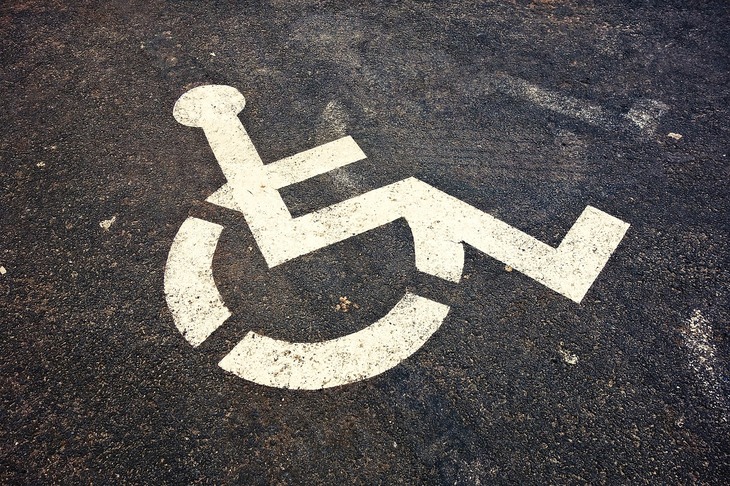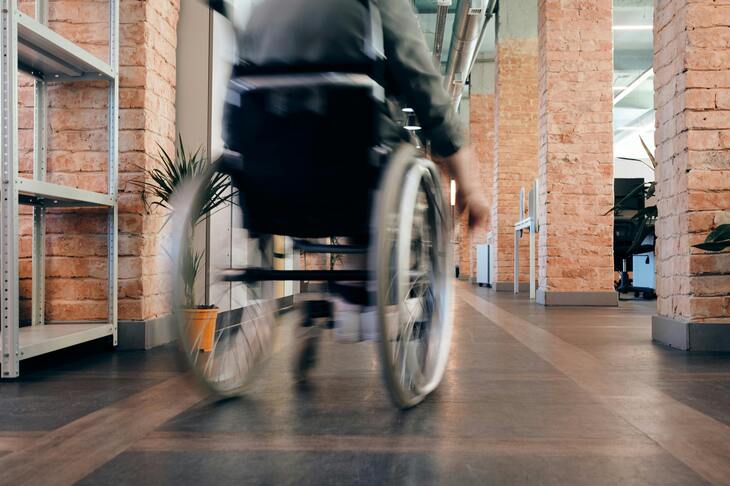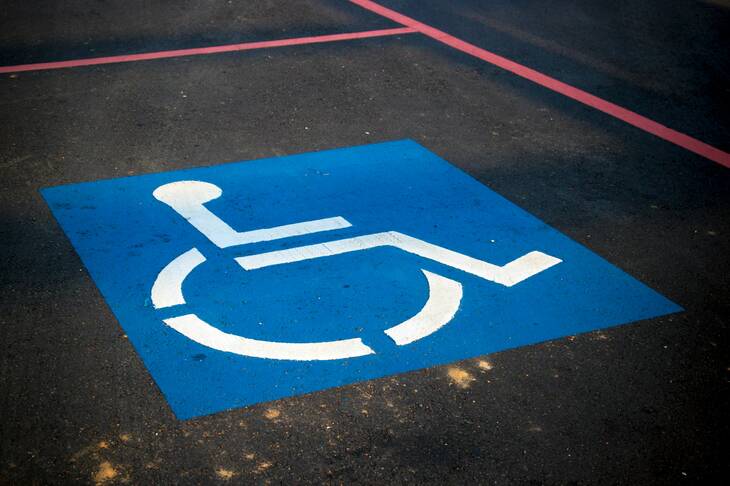Handling the process of obtaining a handicap permit in Nebraska might seem daunting at first. But with this complete guide, we’ll walk you through every step, ensuring that you or your loved ones can enjoy the convenience and accessibility that a disabled parking permit provides. From understanding eligibility requirements to renewing your permit, this guide covers it all. Let’s dive in!
How to Apply for a Handicap Permit in Nebraska
Applying for a handicap permit in Nebraska is simple if you know where to start. Whether you’re applying for the first time or need to renew an existing permit, the process is designed to be as user-friendly as possible.
To apply for a handicap permit in Nebraska, follow these steps:
1. Obtain the Application Form:
The first step in the process is to get your hands on the Nebraska Handicap Parking Permit Application Form. You can download this form from the Nebraska Department of Motor Vehicles (DMV) website or pick one up at any local DMV office.
2. Fill Out the Application:
Complete the personal information section of the form. You’ll need to provide details such as your name, address, and contact information.
3. Doctor’s Certification:
A licensed physician must certify your disability by completing the relevant section of the application form. This certification confirms that your condition meets the state’s requirements for a handicap permit.
4. Submit the Application:
Once you completed the form and your doctor signed it, you can submit it by mail or in person at any Nebraska DMV office. If approved, you’ll receive your handicap placard or license plate within a few weeks.
Eligibility Requirements for a Handicap Placard in Nebraska
Understanding the eligibility requirements for a handicap placard in Nebraska is vital before you start the application process. Not everyone qualifies for a disabled parking permit, so it pays to know if you meet the criteria.
Medical Conditions That Qualify
To be eligible for a handicap permit in Nebraska, you must have a medical condition that significantly impairs your mobility. Some qualifying conditions include:
- Visual, physical, or neurological impairment that limits personal mobility.
- Inability to walk more than 200 feet without stopping to rest or without a wheelchair, crutch, or other assistance device.
- Respiratory problems that limit personal mobility.
- A cardiac condition classified as Class III or Class IV by the American Heart Association.
- Permanent loss of all, or substantially all, the use of one or more limbs.
Temporary vs. Permanent Disability
Nebraska offers both temporary and permanent handicap permits. If your condition is expected to improve, you may only qualify for a temporary permit, which is valid for up to six months. Permanent permits are available for conditions that are unlikely to improve.
How to Qualify for a Handicap Placard in Nebraska
Qualifying for a handicap placard in Nebraska involves both medical and legal criteria. Here’s a deeper look into the steps you need to follow:
1. Consult with Your Physician:
The most important step is to discuss your condition with your doctor. They must agree that your disability significantly impairs your mobility and qualifies you for a permit under Nebraska law.
2. Obtain Medical Documentation:
Your doctor must complete a section of the application form to certify your condition. This documentation is crucial for your application to be approved.
3. Legal Compliance:
Make sure your application complies with all state regulations, including providing accurate personal and medical information.
How Long Does It Take to Get a Handicap Permit in Nebraska?
Wondering how long it takes to get a handicap permit in Nebraska? Patience is key, but the process is generally quick. Here’s what you need to know:
Application Processing Time
After submitting your completed application, it usually takes 2 to 4 weeks for the Nebraska DMV to process your request and mail your permit. If you applied for a temporary permit, the processing time might be shorter.
Expedited Services
If you need your permit urgently, contact your local DMV office to inquire about expedited services. Some situations may allow faster processing times, especially if your disability significantly impacts your daily life.

Nebraska Handicap Placard Application Form: How to Fill It Out
Filling out the Nebraska handicap placard application form correctly is key to securing your permit. Let’s break it down to ensure you complete it accurately:
Personal Information
The first section of the form requires your details, including:
- Full name
- Address
- Date of birth
- Driver’s license or state ID number
Medical Certification
The next section must be completed by a licensed physician. They will need to:
- Describe your medical condition
- Confirm that your disability meets the state’s requirements
- Provide their medical license number and contact information
Signature and Submission
After completing the form, both you and your doctor must sign it. Double-check all information for accuracy before submitting it to the Nebraska DMV.
Cost of a Handicap Parking Permit in Nebraska
One of the common questions applicants have is about the cost of a handicap parking permit in Nebraska. The good news? There are no fees!
In Nebraska, handicap placards are issued free of charge. This ensures that individuals with long-term disabilities can access parking accommodations without financial burden.
Nebraska Handicap Parking Rules and Regulations
Knowing Nebraska’s handicap parking rules and regulations is vital to guarantee compliance and avoid fines. Here’s a quick overview:
Where You Can Park
With a handicap permit, you’re allowed to park in designated handicap spaces throughout Nebraska. These spaces are marked with the International Symbol of Access and are often located near building entrances for added convenience.
Time Limits and Restrictions
Some handicap spaces may have time limits, especially in busy areas. Always check the signs posted near the parking spot. Additionally, your permit does not allow you to park in no-parking zones, fire lanes, or loading zones.
Use of Handicap Permits by Others
Your handicap permit is issued specifically to you, meaning no one else can use it, even if they are driving your vehicle. Misuse of the permit can result in fines, revocation of the permit, and other penalties.
How to Replace a Lost Handicap Permit in Nebraska
Losing your handicap permit can be stressful, but replacing it is a simple process. Here’s what you need to do:
Reporting the Loss
First, report the loss to your local DMV office. They may ask you to provide details such as your permit number, if known, or your driver’s license number.
Application for Replacement
Fill out the Handicap Permit Replacement Request. You must log in with your permit number, last name, and PIN. Once logged in, fill out the information needed.
Processing Time
Once your application is submitted, expect a processing time of 2 to 4 weeks, similar to the original permit issuance process.
How to Get a Handicap License Plate in Nebraska
In addition to a handicap placard, you might prefer to have a handicap license plate for your vehicle. Here’s how you can get one in Nebraska:
Eligibility for Handicap License Plates
To qualify for a handicap license plate, you must meet the same eligibility criteria as a placard. The application process also requires a doctor’s certification of your disability.
Application Process
Fill out the Application for a Nebraska Handicap License Plate. Like the placard application, this form requires both your details and a physician’s certification.
Costs Involved
There is a fee associated with handicap license plates in Nebraska. As of the latest information, the fee is $5, in addition to your regular vehicle registration fees. Confirm with the DMV, as these fees may change at any moment.
Benefits of a Handicap License Plate
Having a handicap license plate can be more convenient than a placard, as it’s permanently affixed to your vehicle. This means you don’t have to worry about displaying a placard every time you park.
Nebraska Temporary Handicap Parking Permit
A temporary handicap parking permit in Nebraska is perfect for those with short-term disabilities. Here’s how to get one:
Eligibility for Temporary Permit
If you’re recovering from surgery, injury, or another condition that temporarily impairs your mobility, you may qualify for a temporary permit. This permit is valid for up to six months.
How to Apply
The application process for a temporary permit is the same as for a permanent one. You’ll need to fill out the Nebraska Handicap Parking Permit Application Form and have your physician certify your temporary condition.
Renewal and Expiration
Temporary permits expire after 3 or 6 months, depending on what your physician stated regarding your disability. If needed, you can renew it once. However, if your condition persists beyond the expiration date, you’ll need to apply for a new temporary permit.
Nebraska Handicap Placard for Out-of-State Residents
If you’re visiting Nebraska from another state and have a handicap placard, you might wonder if it’s valid here. The good news is that Nebraska recognizes out-of-state handicap placards.
Using Your Out-of-State Placard
While in Nebraska, you can use your out-of-state handicap placard to park in designated spaces. Just confirm it’s clearly displayed on your vehicle’s rearview mirror.
Applying for a Nebraska Permit
If you’re planning to stay in Nebraska for an extended period, you might want to apply for a Nebraska-issued handicap placard. The application process is the same as for residents, and you’ll need to meet the state’s eligibility requirements.
How to Transfer a Handicap Permit to a Different Vehicle in Nebraska
Transferring your handicap permit to a different vehicle in Nebraska is a common need, especially if you’ve purchased a new car. Here’s how you can do it:
Transferring a Placard
Since a handicap placard is not tied to a specific vehicle, you can easily transfer it to any car you’re driving or riding in. Just make sure it’s properly displayed in the new vehicle.
Transferring a License Plate
If you have a handicap license plate and need to transfer it to a different vehicle, you’ll need to visit your local DMV. Bring your current license plate, registration, and proof of insurance for the new vehicle.
Fees and Processing
There may be a small fee associated with transferring a license plate, and processing times can vary depending on the DMV office. Be sure to check with your local office for specific details.
Can I Use My Nebraska Handicap Placard in Other States?
Traveling outside of Nebraska with your handicap placard? Here’s what you need to know:
Nationwide Recognition
Fortunately, Nebraska handicap placards are recognized in all 50 states. This means you can use your permit to park in designated handicap spaces wherever you go in the U.S.
Check Local Regulations
While your Nebraska placard is valid nationwide, it’s important to familiarize yourself with the local parking regulations in the states you’re visiting. Some states may have specific rules or time limits for handicap parking.
How to Renew a Handicap Parking Permit in Nebraska
Renewing your handicap parking permit in Nebraska is essential to ensure continued access to accessible parking spaces. Here’s a step-by-step guide:
When to Renew
Permanent handicap permits in Nebraska are valid for six years. You’ll need to renew your permit before it expires to avoid losing your parking privileges.
Renewal Process
The renewal process is similar to the initial application:
- Obtain the Renewal Form: The DMV will typically send you a renewal notice, but you can also download the form online.
- Doctor’s Certification: If your condition has not changed, you may not need a new doctor’s certification. However, some conditions may require re-certification.
- Submit the Renewal Application: Send the completed form to the Nebraska DMV by mail or submit it in person.
Getting a Handicap Permit in Nebraska: Final Notes
Obtaining a handicap permit in Nebraska is designed to be simple and accessible to those who need it. From understanding eligibility requirements to navigating the application and renewal processes, this guide has provided a comprehensive overview to help you every step of the way.
Remember, whether you’re applying for the first time or need to replace or renew your permit, Dr. Handicap is here to assist you. With your handicap permit in hand, you can enjoy greater mobility and accessibility, making everyday tasks a little bit easier.
Featured image by Pixabay






